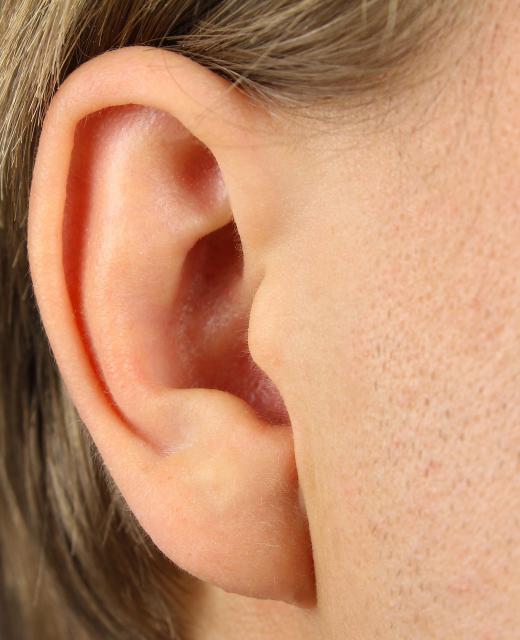An ultrasonic sensor is a device that uses high-frequency sound to measure distance. These sensors are also known as transceivers, and operate similar to sonar. While sonar is primarily used underwater, ultrasonic transceivers can be used in air. Sensors using ultrasonic waves are common in industrial and medical applications.
This type of sensor typically consists of a single transceiver unit, which is able to both emit and detect sound. This device creates a sonic pulse that is beyond the hearing range of the human ear. Most solid objects reflect sound waves. The transceiver uses a timer to determine precisely how long an ultrasonic pulse takes to "bounce" off an object, and be returned to the unit.

A sound wave usually travels at a known speed. In room-temperature air, this speed is approximately 1,126 feet (343 meters) per second. When both the speed and time of ultrasonic pulses are known, the distance of a reflecting object can be estimated using basic math calculations. If an ultrasonic sensor emits a pulse and receives the reflected signal one-tenth of a second later, for instance, the object is around 112 feet (34 meters) away.
An ultrasonic sensor is not always accurate, however. Several factors can degrade the ability of a sensor to measure distance precisely. The speed of sound is not constant, but can vary depending on the temperature and humidity of air. This means that very warm or very cold conditions can make an ultrasonic sensor ineffective.
Objects reflect sound waves in different ways. Some materials, such as metal, reflect sound very well. Soft materials including plush fabrics often absorb sound waves. The accuracy of this type of sensor can be influenced by the type of object being detected.
Ultrasonic sensors have many applications. Industrial machines often use these sensors to detect the presence of an object in an automated factory. A machine designed to apply labels to bottles, for example, may use ultrasonic methods to determine when a product is in place and ready to be stamped. Security installations also use sonic sensors to detect the presence of an unauthorized person. These sensors can be used to create a "virtual fence" around a secure area.
Medical facilities often use ultrasonic sensors. The sensors used in medicine are more precise than most industrial devices, but operate using the same principle. Ultrasonic imaging uses high-frequency pulses to detect both solid objects and open spaces. A transceiver connected to a computer is able to create an image that shows these different areas, and can be used by medical professionals to visualize areas within the human body.
